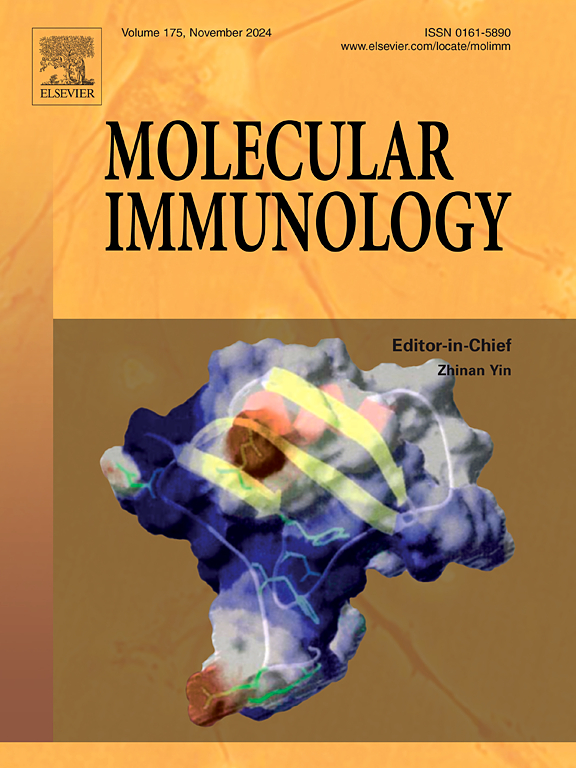Klotho promotes bone formation in rheumatoid arthritis-associated osteoporosis by modulating the Fgf23/Fgfr1/NF-κB pathway and inhibiting ferroptosis
IF 3
3区 医学
Q2 BIOCHEMISTRY & MOLECULAR BIOLOGY
引用次数: 0
Abstract
Aims
Rheumatoid arthritis (RA) frequently leads to osteoporosis (OP) and increased fracture risk. The protein Klotho plays a recognized role in bone metabolism, yet its specific function in RA-associated osteoporosis (RA-OP) remains incompletely understood. This study investigated the molecular mechanisms by which Klotho maintains bone homeostasis in RA-OP patients.
Methods and analysis
We quantified Klotho levels in RA-OP patients and healthy controls and then conducted in vitro experiments using mouse embryonic osteoblast precursor cell line (MC3T3-E1) preosteoblastic cells to examine Klotho's effects on osteogenic differentiation and ferroptosis. We assessed osteogenic differentiation through runt-related transcription factor 2 (Runx2), collagen type i alpha 1 chain (Col1a1), and osteocalcin (Ocn) expression, while ferroptosis regulation was evaluated via glutathione peroxidase 4 (Gpx4) and Acyl-CoA synthetase long-chain family member 4 (Acsl4) expression. The interaction between fibroblast growth factor 23 (Fgf23) and fibroblast growth factor receptor 1 (Fgfr1) was analyzed using coimmunoprecipitation assays, with Fgf23's role examined through knockdown and overexpression experiments.
Results
Results showed RA-OP patients had significantly reduced Klotho levels compared to controls. Klotho overexpression in MC3T3-E1 cells enhanced osteogenic differentiation and protected against ferroptosis by upregulating Gpx4. Mechanistically, Klotho facilitated Fgf23-Fgfr1 interaction and repressed nuclear factor κ (NF-κB) signaling.
Conclusion
Our findings demonstrate that Klotho mediates osteogenic action through the Fgf23/Fgfr1-NF-κB pathway while simultaneously protecting osteoblasts from ferroptosis, advancing our understanding of RA-OP pathophysiology and identifying Klotho as a promising therapeutic target for preventing RA-related bone loss.
Klotho通过调节Fgf23/Fgfr1/NF-κB通路和抑制铁下沉来促进类风湿关节炎相关骨质疏松症的骨形成
目的类风湿性关节炎(RA)经常导致骨质疏松症(OP)和骨折风险增加。Klotho蛋白在骨代谢中起着公认的作用,但其在ra相关性骨质疏松症(RA-OP)中的具体功能仍不完全清楚。本研究探讨了Klotho维持RA-OP患者骨稳态的分子机制。方法和分析我们定量测定RA-OP患者和健康对照的Klotho水平,然后利用小鼠胚胎成骨前细胞系(MC3T3-E1)成骨前细胞进行体外实验,观察Klotho对成骨分化和铁凋亡的影响。我们通过矮子相关转录因子2 (Runx2)、胶原i型α 1链(Col1a1)和骨钙素(Ocn)表达评估成骨分化,而通过谷胱甘肽过氧化物酶4 (Gpx4)和酰基辅酶a合成酶长链家族成员4 (Acsl4)表达评估铁凋亡调节。使用共免疫沉淀法分析成纤维细胞生长因子23 (Fgf23)和成纤维细胞生长因子受体1 (Fgfr1)之间的相互作用,并通过敲低和过表达实验检测Fgf23的作用。结果与对照组相比,RA-OP患者的Klotho水平明显降低。MC3T3-E1细胞中Klotho过表达可通过上调Gpx4促进成骨分化并防止铁凋亡。在机制上,Klotho促进Fgf23-Fgfr1相互作用,抑制核因子κ (NF-κB)信号传导。本研究结果表明,Klotho通过Fgf23/Fgfr1-NF-κB通路介导成骨作用,同时保护成骨细胞免于铁凋亡,促进了我们对RA-OP病理生理的理解,并确定了Klotho是预防ra相关骨质流失的有希望的治疗靶点。
本文章由计算机程序翻译,如有差异,请以英文原文为准。
求助全文
约1分钟内获得全文
求助全文
来源期刊

Molecular immunology
医学-免疫学
CiteScore
6.90
自引率
2.80%
发文量
324
审稿时长
50 days
期刊介绍:
Molecular Immunology publishes original articles, reviews and commentaries on all areas of immunology, with a particular focus on description of cellular, biochemical or genetic mechanisms underlying immunological phenomena. Studies on all model organisms, from invertebrates to humans, are suitable. Examples include, but are not restricted to:
Infection, autoimmunity, transplantation, immunodeficiencies, inflammation and tumor immunology
Mechanisms of induction, regulation and termination of innate and adaptive immunity
Intercellular communication, cooperation and regulation
Intracellular mechanisms of immunity (endocytosis, protein trafficking, pathogen recognition, antigen presentation, etc)
Mechanisms of action of the cells and molecules of the immune system
Structural analysis
Development of the immune system
Comparative immunology and evolution of the immune system
"Omics" studies and bioinformatics
Vaccines, biotechnology and therapeutic manipulation of the immune system (therapeutic antibodies, cytokines, cellular therapies, etc)
Technical developments.
 求助内容:
求助内容: 应助结果提醒方式:
应助结果提醒方式:


